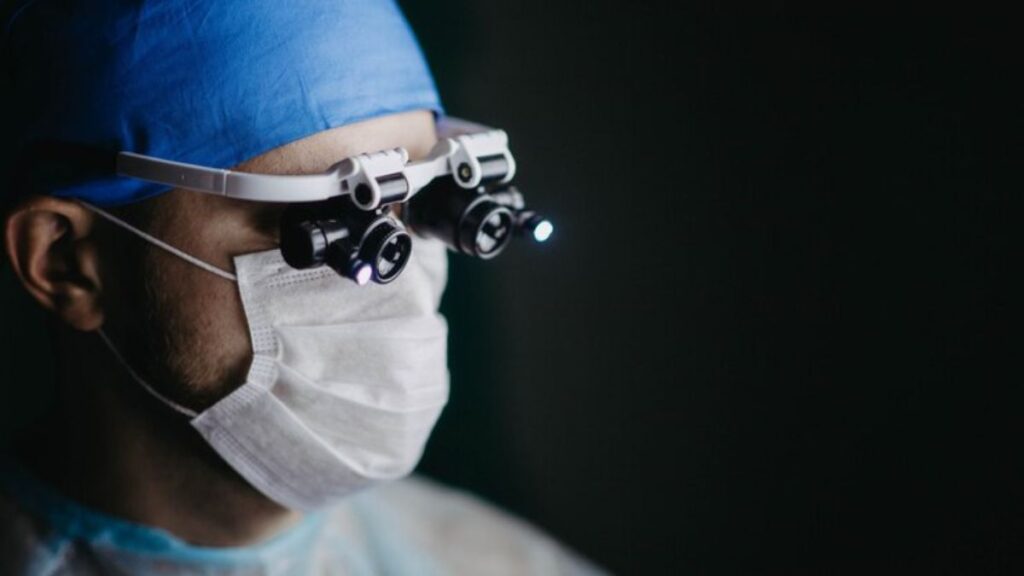Surgical headlights are essential tools in today’s operating rooms. They deliver focused, consistent illumination that helps surgeons perform complex procedures with accuracy and confidence. These devices enhance the visibility of anatomical structures, leading to more precise incisions, fewer errors, and better patient outcomes.
Over the years, improvements in lighting, ergonomics, and power systems have expanded the range and capabilities of surgical lighting. This guide explains the different types of surgical headlights, compares wireless vs wired surgical headlights, and breaks down the essential features of surgical headlights every surgeon should consider.
The Basics of Surgical Headlights
Surgical headlights are wearable lighting systems that project a high-intensity beam aligned with the surgeon’s line of sight. Their primary purpose is to eliminate shadows and provide uniform lighting during procedures. Performance varies based on several factors: brightness, power configuration, weight, comfort, and adjustability.
Used across nearly all specialties—including general, orthopedic, cardiovascular, ENT, dental, and plastic surgery—these headlights help reduce reliance on overhead lighting and maintain a clear, unobstructed surgical field.
The Main Types of Surgical Headlights
Surgical headlights come in several forms, categorized by power supply, lighting technology, and integration capabilities.
1. Wired Surgical Headlights
Wired models connect to an external power source, either through a direct plug or a belt-mounted battery pack. These deliver consistent, uninterrupted power and typically provide higher brightness levels. They are ideal for long or intensive procedures. However, the cord can become cumbersome, potentially causing discomfort or restricting movement during surgery.
2. Wireless Surgical Headlights
Wireless systems integrate rechargeable batteries directly into the headpiece, improving mobility and reducing clutter in the surgical environment. This design is especially useful in outpatient or mobile setups. Battery life varies, so it’s important to plan for recharge cycles or use quick-swap batteries. The trade-off in wireless vs wired surgical headlights comes down to convenience versus continuous operation.
3. LED Surgical Headlights
LEDs are now the standard in modern surgical headlights. They are energy-efficient, generate minimal heat, and produce bright, white light ideal for distinguishing tissues. Their long life span and adjustable brightness settings make them the preferred choice among the newer types of surgical headlights.
4. Through-the-Loupe Headlights
These headlights are designed to work in tandem with surgical loupes, providing a precisely aligned beam with the magnified view. Surgeons in dental, ENT, and plastic surgery especially benefit from this configuration. Schultz Loupes, for instance, offers integrated systems that improve visibility and support ergonomic positioning.
5. Fiber Optic Headlights
Though less common today, fiber optic headlights still have a role in some practices. They rely on cables to transmit light from an external source. While they can deliver very high brightness, their bulk and heat output make them less practical than modern LED options.
6. Hybrid Headlights
Hybrid models combine wired and wireless elements—typically a wireless setup with optional corded operation. These give users flexibility to switch between power modes depending on the case at hand. While not as common, hybrid systems are increasingly appreciated in surgical environments that require adaptability.
Comparing Wireless vs Wired Surgical Headlights
The choice between wireless vs wired surgical headlights depends on the specific needs of the surgeon and the procedure.
- Wired models: Deliver uninterrupted illumination for lengthy surgeries. They provide stable power and maximum brightness without battery concerns. However, their cords can be restrictive.
- Wireless models: Offer freedom of movement and reduce workspace clutter. They are ideal for procedures requiring flexibility, though users must manage battery life and recharge times.
Many modern systems bridge the gap with high-capacity batteries and quick-swap options, making wireless models more viable for a wider range of procedures.
Key Features of Surgical Headlights to Evaluate
Surgeons should assess the following features of surgical headlights before making a purchase:
Brightness and Intensity
Measured in lumens, brightness is critical to ensure visibility in deep or poorly lit surgical cavities. Adjustable light levels allow surgeons to tailor intensity to different procedures or patient conditions.
Beam Uniformity and Spot Control
A good headlight delivers a uniform beam with no hot spots. Adjustable beam diameter or focus settings enhance control, particularly during fine or layered procedures.
Battery Life and Recharge Time
In wireless models, these are make-or-break factors. Seek systems with long-lasting lithium-ion batteries and short recharge intervals. The option to carry a spare battery or charge on the go is valuable.
Weight, Fit, and Comfort
A comfortable fit is crucial during long surgeries. Lightweight builds with adjustable straps and padding prevent pressure on the forehead and neck. Poor ergonomics can lead to chronic discomfort or even injury.
Light Color Temperature
Color temperature around 5,000–6,000 Kelvin offers a neutral white light. This range is best for differentiating tissues, identifying bleeding points, and observing subtle changes in anatomy.
Loupe Integration
Surgeons who use magnification should prioritize headlight systems that align precisely with their loupes. Misalignment can cause eye strain or force awkward head positioning.
Practical Considerations
Beyond core features, consider usability, durability, and hygiene. Look for water-resistant or sealed systems that simplify cleaning and sterilization. Products with modular components can be easier to repair or upgrade.
Support from the manufacturer also matters. Reliable customer service and access to parts can make a difference over time.
The clinical setting is another factor. In large hospitals with dedicated ORs, wired models may be more appropriate. In fast-paced or mobile environments, wireless systems offer greater flexibility.
Final Thoughts
Choosing the right surgical headlight is about more than brightness—it’s about optimizing comfort, visibility, and performance. With many types of surgical headlights available today, and clear between wireless vs wired surgical headlights, it’s important to make an infdistinctions ormed decision based on your clinical demands.
Evaluate the key features of surgical headlights carefully, and match them to your surgical workflow. The right choice will enhance your efficiency, reduce fatigue, and support better patient care.
As technology continues to evolve, new options will offer even more adaptability and performance. Staying current with advancements ensures that both patients and surgical teams benefit from the best possible outcomes.







